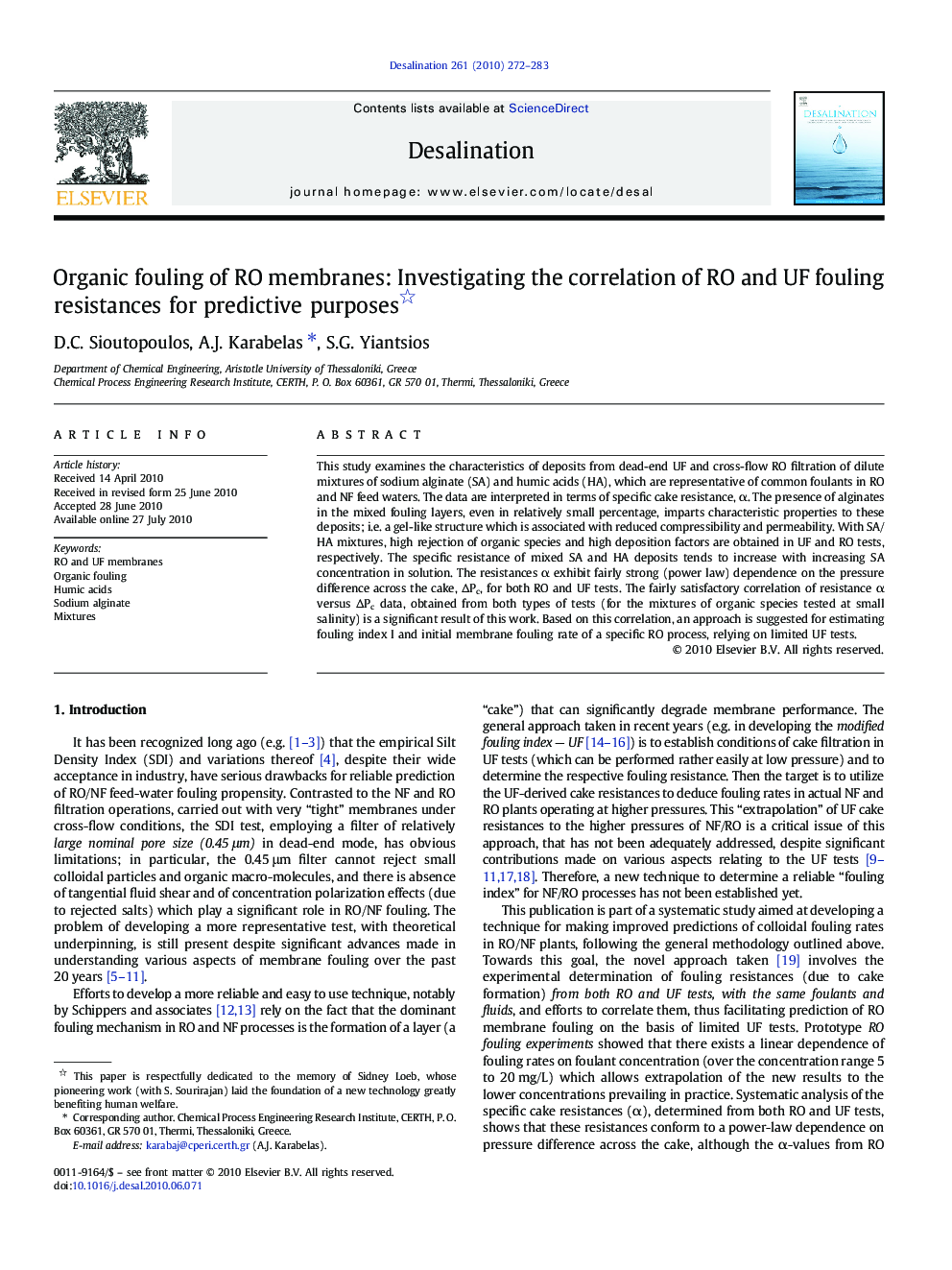| Article ID | Journal | Published Year | Pages | File Type |
|---|---|---|---|---|
| 625509 | Desalination | 2010 | 12 Pages |
Abstract
This study examines the characteristics of deposits from dead-end UF and cross-flow RO filtration of dilute mixtures of sodium alginate (SA) and humic acids (HA), which are representative of common foulants in RO and NF feed waters. The data are interpreted in terms of specific cake resistance, α. The presence of alginates in the mixed fouling layers, even in relatively small percentage, imparts characteristic properties to these deposits; i.e. a gel-like structure which is associated with reduced compressibility and permeability. With SA/HA mixtures, high rejection of organic species and high deposition factors are obtained in UF and RO tests, respectively. The specific resistance of mixed SA and HA deposits tends to increase with increasing SA concentration in solution. The resistances α exhibit fairly strong (power law) dependence on the pressure difference across the cake, ÎΡc, for both RO and UF tests. The fairly satisfactory correlation of resistance α versus ÎΡc data, obtained from both types of tests (for the mixtures of organic species tested at small salinity) is a significant result of this work. Based on this correlation, an approach is suggested for estimating fouling index I and initial membrane fouling rate of a specific RO process, relying on limited UF tests.
Related Topics
Physical Sciences and Engineering
Chemical Engineering
Filtration and Separation
Authors
D.C. Sioutopoulos, A.J. Karabelas, S.G. Yiantsios,
